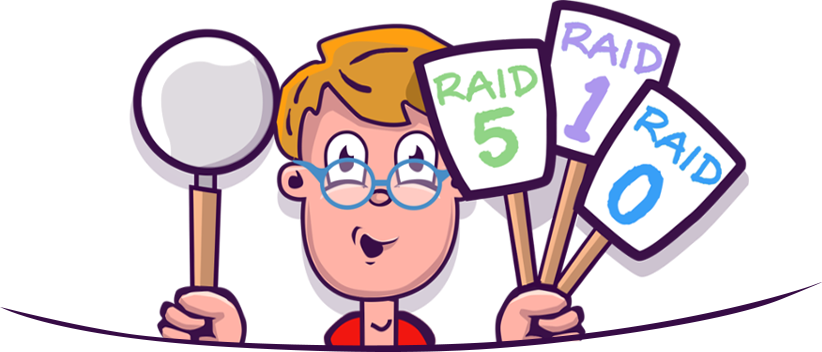
Retrieving RAID 0
RAID 0 is also known as a stripe set or striped volume. It uses two disks or more that are being read or written in parallel in order to give increased storage and performance. Data written to RAID 0 will fragment across all the disks, which means that a failure on a single disk will cause failure across the board. Recovering data from a RAID 0 that has failed is usually very unlikely, but don’t give up hope just yet. If the controller has failed then you can just replace it and everything will be fine. If the RAID volume has been reformatted or a file has been deleted then you can perform standard file recovery procedures as you would on a normal disk. Recovery becomes tricky when a disk within RAID 0 has failed. The best bet here is to tackle each drive separately and try to build a virtual RAID.
Retrieving RAID 1
If a disk in a RAID 1 fails then the overall RAID will still be functional. The RAID 1 will also still work with a failed disk if there are more than two disks; providing one mirrored disk is unbroken. Replacing the disk in the RAID that has failed is one solution, but removing the wrong one can have severe consequences. Removing the physical disks from the RAID and performing data recovery on each one individually could yield better results. Create an image of one disk and examine the loss – there may in fact not be any. If the failure is across multiple disks then you might be able to attempt data recovery on each one and combine your results.
Retrieving RAID 5
If a single disk in a RAID 5 fails then the RAID will keep working. It’s similar to a RAID 1, in that a failed disk can be taken out and replaced in order to rebuild the data. And again, removing the wrong disk is disastrous. The best approach is to image each of the disks and then rebuild them in a virtual RAID. Shut down the RAID, remove the disks and then mount them in turn as you image them. When rebuilding the RAID in the virtual environment, ensure that you are using all the correct parameters (such as file system and block size) of the original RAID 5 – it won’t work properly otherwise. This RAID parameters tutorial should come in handy if you’re having issues with this.